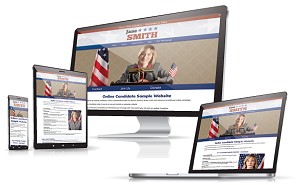 In the business world, the terms ‘soft launch’ and ‘hard launch’ refer to two different techniques for introducing a new product or service to the market. A soft launch is more subtle, for when a business wants to make a gradual roll-out. A hard launch, on the other hand, is designed to generating buzz right away.
In the business world, the terms ‘soft launch’ and ‘hard launch’ refer to two different techniques for introducing a new product or service to the market. A soft launch is more subtle, for when a business wants to make a gradual roll-out. A hard launch, on the other hand, is designed to generating buzz right away.
The same techniques apply to websites. Often an organization will do a soft launch, and they may have a limited number of users try the service before it is rolled out to the general public.
It’s typical for a candidate’s website to have a ‘coming soon’ page in the days or weeks prior to an official candidacy announcement. Then, when the time is ready, the site goes live for voters.
All excited about the launch, an announcement is made to friends and supporters.
But when they search Google for the candidate’s name, they find – nothing.
Surprise! The site isn’t listed in Google at all.
Here’s why: If you look for Google to have your site listed in the search results immediately after a brand new site goes live, you will probably be disappointed. It takes time for search engines to index a new website.
However, there are ways to speed up the indexing process. An early soft launch is one method.
By doing an early soft launch of your site, you may not attract human visitors, but it may attract search engine spiders. Spiders are the search engine software that crawls the web looking for new or updated content. Simply having a few links from your social media accounts is enough to trigger a spider to visit and index your website.
Another benefit to a soft launch is that you can have a few trusted users go through the site first. They can give you feedback and point out any errors they find before the whole world sees them.
You may think that you’re going to lose all the buzz from a hard launch with a soft launch, but that’s not the case. A soft launch is only to a small group of individuals, so plenty of opportunity remains to drive awareness through a hard launch.
Some candidates may not have the option of a soft launch. Some judicial candidates, for example, cannot start campaigning before a particular date. A live website may put them in violation of local election laws.
Political Website Launch Checklist
Use this checklist to make sure your site is ready to go live for the public.
Fill out your site settings
The Site Settings page in your Online Candidate admin covers all of the major website configurations, including form settings, page options, disclosure options and custom code insertion. As we’ve added features over the years, the page has become longer, but we’ve found it’s easier to keep everything in one place. Make sure you have all the sections configured the way you want before you go live with your site.
Titles and meta data
When creating your site pages, the page title is the most important element for SEO and is also important so that users know what’s on the page. Make sure your page titles are different on every page and that the title relates to that page’s content. The meta descriptions should also be short and to the point.
Proofread your content
Once you have your site content ready to go, check it over. Even if you’ve already read it, read it again. Then get someone else to read it. Someone will usually find an error. Streamline your text as much as possible. Break up large text blocks into shorter paragraphs. Add clear headings throughout, and use lists so that readers can easily scan the content. Don’t forget about dynamic text too, such as quote and alert boxes (which you can add by applying a style in the page editor).
Make sure your spelling and grammar, consistency and tenses are correct. Again, have someone you trust give your content a final read.
Call to actions in place
Don’t assume that your visitors will know what to do after reading a page on your website. They won’t. All of your pages should have a call to action. For most pages, this will be a reminder to vote on a primary or Election Day. Calls to action also include volunteer or donation requests.
Check your links
Don’t just assume all the links in your site content work. Check them out by clicking on them, especially links to outside websites. Sometimes people don’t copy the links properly for external sites.
All Pages Added To Navigation
When generating your site, be sure to add any new pages you’ve created to your website navigation.
Search Engine Accounts
To ensure that your site is indexed quickly, you should create webmaster accounts on Google and Bing. You will need to verify your site ownership by adding a small amount of code to your site header. Setting up search engine accounts will give you access to additional search engine tools and site information.
Set Up Analytics
Add your analytics or other tracking code to the “Sitewide analytics or tracking code” box under Custom Code Insertion section in the Site Setup. Google Analytics is free and simple to set up after you have a Google Webmaster Account, but you can use whatever tracking service you choose.
Additional instructions on how to set up search engine accounts and analytics can be found in the Online Candidate Site Administration.
Verify Your Email Accounts
Send a test message to all of your email address to make sure the accounts and forwards are working properly. Make sure the proper email addresses are assigned to your various forms, as well.
Refresh When You Go Live!
Once you go live with your campaign website, the temporary page will be replaced with your actual website. If you still see the temporary page after regenerating the site, try refreshing your browser. If that does not work, hold down the shift key while reloading the page. Sometimes browsers may cache a page for display and you need to force a reload.
Online Candidate offers a Site Launch Packages and a Site Launch and Social Media Setup option with our website packages to help you get a leg up with your own site launch.
« Are You Voting Next Week?Updated Online Candidate Client Service Offerings »





